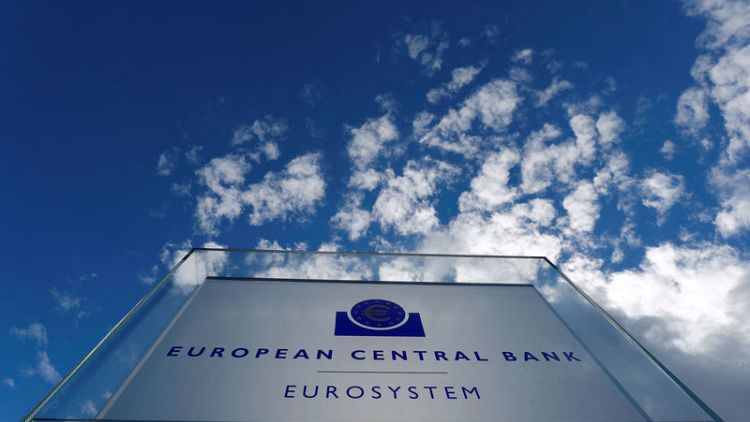By Huw Jones
LONDON (Reuters) - The European Central Bank starts publishing Estr, its new interest rate benchmark, on Wednesday, in the biggest change for market plumbing since the introduction of the euro two decades ago.
It is part of global efforts to clean up markets after banks were fined $9 billion (7.33 billion pounds) for trying to manipulate the London Interbank Offered Rate, or Libor, and its variants to boost their trading positions.
Dubbed the world's most important number, Libor is an interest rate based on quotes from banks on how much it would cost to borrow money from each other. It is a price reference for derivatives to home loans and credit cards worth over $300 trillion globally.
Attempts by banks to rig the 50-year old benchmark denominated in sterling, yen, Swiss franc, dollar and euro, prompted central banks to come up with their own "risk free" or harder-to-rig alternatives.
Widespread use of Libor is set to end by December 2021 in Britain and the United States. The euro zone is taking a more hybrid approach.
U.S. and UK markets already use central bank alternatives for new derivatives contracts, bonds and loans. But switching to the new rates in outstanding contracts will be a massive exercise, costing $300 million to $400 million for big banks. Britain alone has an estimated 200,000 Libor-linked mortgages.
WHAT IS ESTR?
Estr is compiled by the European Central Bank. After a pilot, the ECB will formally publish it for the first time on Oct. 2, reflecting trading on Oct. 1.
It is based entirely on daily money market transactions, rather than the quotes from banks used in the Libor stable of benchmarks. Transactions can be traced to verified market activity, making Estr harder to rig.
It will replace Eonia, or euro overnight index average, which is referenced in derivatives contracts worth a notional 22 trillion euros.
Eonia was based on quotes from banks, but from Tuesday it is redefined as the Estr rate plus a fixed spread 8.5 basis points. It will be discontinued at the end of 2021.
IS THIS THE SAME AS EURIBOR?
No. Estr is for short-term contracts. The separate Euribor benchmark, created in 1999 when the euro was introduced, is for contracts that stretch from a week to 12 months.
Derivatives contracts worth over 100 trillion euros reference Euribor, which is based on quotes from banks. Debt securities based on Euribor total about 1.6 trillion euros.
A reformulation of Euribor was approved by Belgian regulators in July for use in the European Union, described as an important step towards the durability of the benchmark.
WHAT ARE OTHERS DOING?
The euro zone is playing catch-up with other countries.
The Federal Reserve began daily publication of its secured overnight financing rate, or Sofr, in April 2018, based on daily trades worth around $800 billion.
The Bank of England took over an industry-compiled sterling overnight index average, or Sonia, revamped it and began calculating and publishing the rate in April 2018.
The Swiss franc-denominated Libor is set to be replaced by the Swiss average rate overnight, or Saron, administered by the SIX Exchange.
The Bank of Japan's Tokyo Overnight Average Rate, Tonar, is set to replace yen Libor. A separate Tibor -- Tokyo Interbank Offered Rate -- compiled by Japanese banks is expected to continue in a reformed version alongside Tonar.
JOB DONE THEN?
Far from it.
Central banks want faster take-up of the new rates to avoid a large pile of financial contracts still referencing benchmarks from the Libor stable at the end of 2021.
Using the "risk free" rates for new contracts is the easy bit. Banks are making changes, but their customers need prompting in some cases.
The new rates are backward-looking overnight benchmarks, unlike Libor, which has "terms" or variants stretching months and years into the future to underpin loans, bonds and derivatives.
Coming up with "terms" to complement overnight rates that don't significantly alter a contract's value is a challenge. Industry is looking how to compound or bolt on a top-up rate to the overnight rate to mimic Libor's forward terms.
Markets also need fallbacks, a plan for what would happen to contracts if regulators suddenly deemed Libor no longer safe to use.
What happens to the inevitable hard core of "legacy" contracts that won't get shifted to a new rate by the end of 2021? Regulators are thinking hard about that.
(Reporting by Huw Jones, editing by Larry King)



